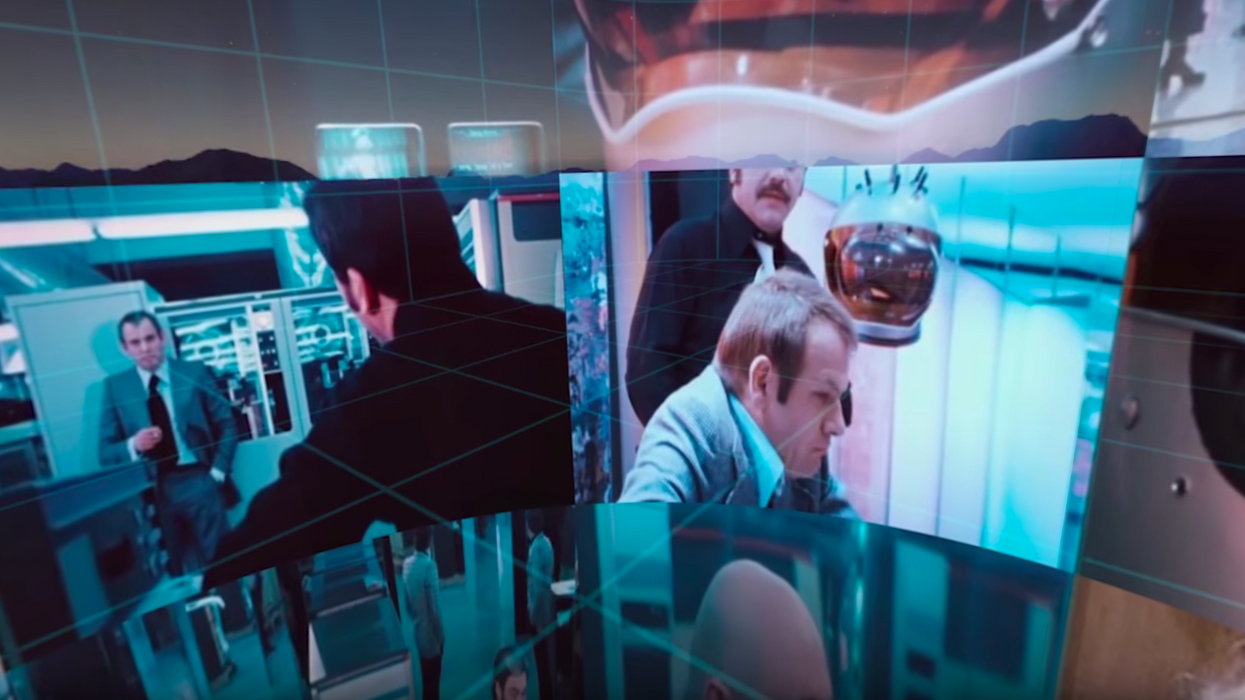Watch: This 360-Degree Supercut Explores Film's View of Virtual Reality
This super-super-supercut is a 360-degree journey through the depiction of VR on film, leading us to question the whole nature of our business.

I watched Rishi Kaneria's new video essay on virtual reality on my iPhone, which turned out to be a very good thing. Admittedly, during the first minute or so, I found myself staring at a grommet surrounded by ever-changing frames; each frame was a shot from a film which looked vaguely familiar to me. Feeling puzzled, I shifted position in my chair, and when I did, the phone moved, and when the phone moved...my vantage point on the film changed, as the lens seemed to move with me. Titles sprang into view, the film gained coherence, and I had a brief moment of total wonderment. Kaneria has made this super-super-supercut of movies that engage with virtual reality—and his piece in itself is a 360 degree film. See for yourself below, and make sure you click and drag your mouse around within the frame to get the whole experience.
Virtual reality immerses the viewer by allowing him or her to move around fully within a landscape. The 360-degree filmmaking in Kaneria's piece is not technically full virtual reality, but the technique does shows you the whole way around its subject; as you rotate your device or click and drag a cursor around your screen, you heighten your experience by taking in new details. It's a relatively new technology, and, if properly developed, it could change filmmaking, to say the least, pushing it towards the point where films become an increasingly persuasive substitute for reality.
But what of virtual reality, as we have seen it portrayed in film? Invariably, the virtual world is presented as an altogether different and indescribably superior plane; whatever battles might be taking place in everyday reality, the conflicts that develop in the virtual world are always better, bigger, more symbolically loaded. In the past few decades, the most famous example of a film that uses virtual reality as a trope is The Matrix, sampled here; the battles Keanu Reeves' programmer fights as he flips back and forth between the post-apocalyptic real world and The Matrix, a reality which was created for him by sentient machines, could shape the very definition of "reality." The images and production design of the dual worlds portrayed in this film set a gold standard for subsequent films that reference virtual reality.
Of course, if you wanted to know the precursor for The Matrix, look no further than TRON, in which Jeff Bridges' hacker is actually transformed into a combination of bits and bytes by an evil but ingenious computer programmer, fighting his way back to humanity in a film that resembles nothing so much as a live-action video game.
As this super cut shows, virtual reality has long been explored in films, but it is itself becoming a reality in filmmaking, thanks to a number of mind-blowing technological innovations. Take, for instance, the Nikon KeyMission 360, a dual-lens camera that takes two different 180 degree shots and then combines them so you can see a full 360 degree view of the scene you're filming. Or the latest projects from the Scatter studio, which combine 360 degree filmmaking with programs often used for video game software, such as Xbox. The larger questions these developments raise include: How does one integrate this technology without overwhelming a story? And possibly: Is cinema ready for such a change?












